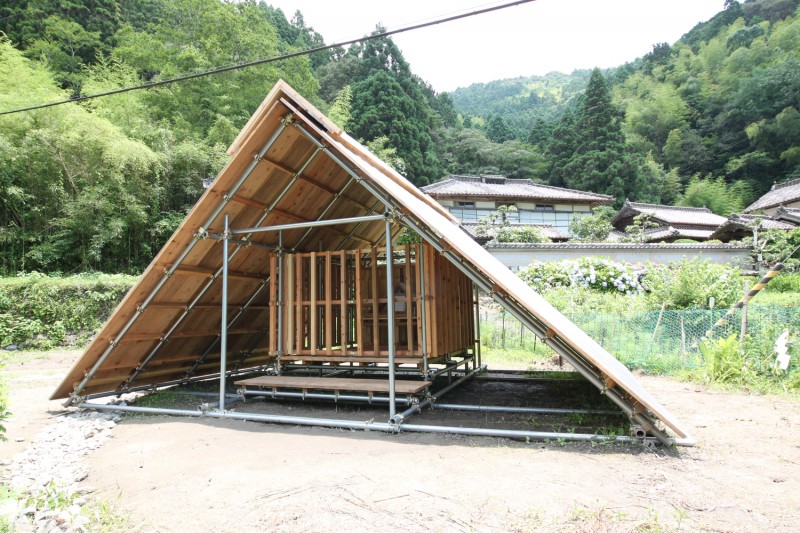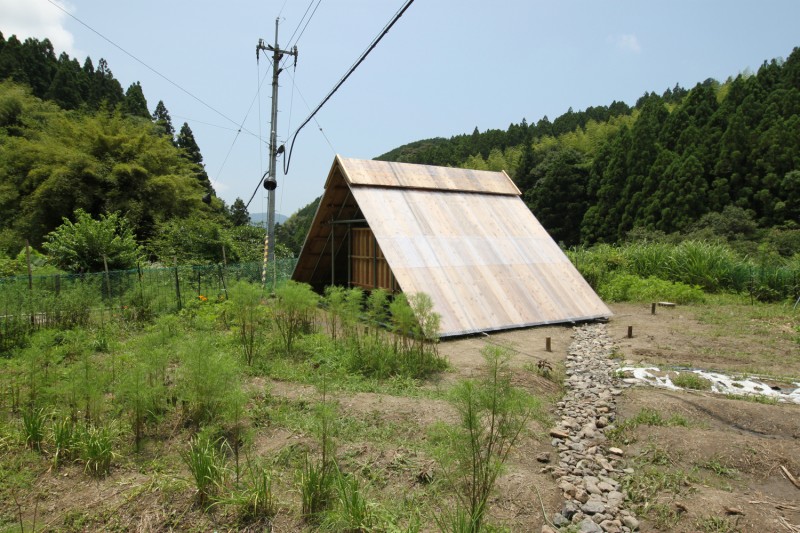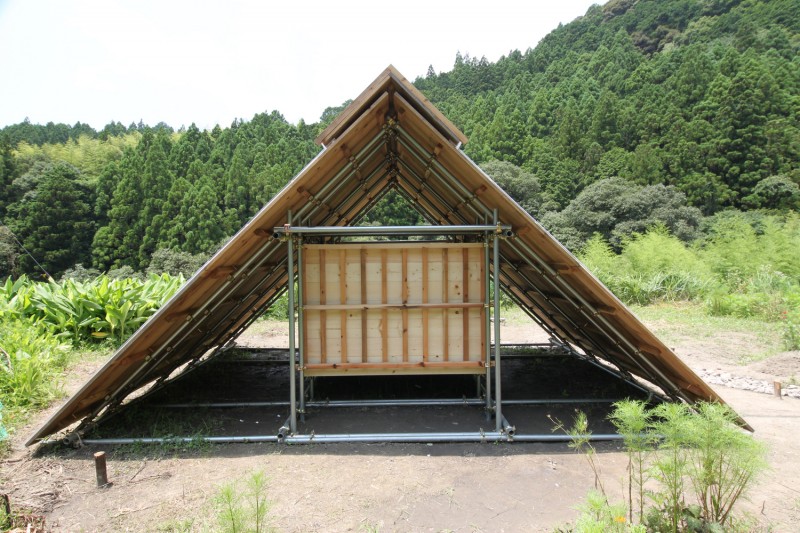
Self-build Shinto Shrine / Kikuma Watanabe
Photographs Courtesy of Kikuma Watanabe
From the architect:
This is the self-built temporary Shinto shrine in a depopulated village in the mountainous area of Kochi in Japan. For over 200 years the village used to have nine houses making up the Kanamine Shinto community, with a shrine set up in the upper part of the forest. However, the village started to lose its population, resulting in only one house and a neglected shrine that in 2015 was deeply injured by a heavy typhoon. In 2016 the worship structure faced a crisis and collapsed, so the inhabitants, together with the Kochi University of Technology located nearby, decided to construct a temporary shrine in the houses area.
Because the community was only inhabited by one person, the expenses of the construction were extremely limited. Furthermore, the road to the site was really narrow, obliging the team to carry the construction materials for one kilometer. This led the temporary shrine to be self-built, with little money and with limited materials. The team consisted of ten students plus architect and in five days they erected the worship space with steel pipes for the scaffolding, wooden lumbers, and wooden boards.
The triangular shape of the shrine symbolizes not only the sacred mountain but also the tunnel that leads to it. In the fall of 2016 a Shinto festival will be held by the inhabitants and members of Kochi University of Technology. The new construction aims to become the core of the community consist of both inhabitants of the community and members of the university.



Leave a Reply